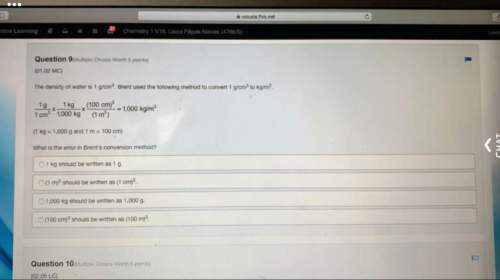Consider the fictional reaction:
A + B → F + G
which is catalyzed by reagent C. The ra...

Chemistry, 10.05.2021 16:30 pilarmonsivais
Consider the fictional reaction:
A + B → F + G
which is catalyzed by reagent C. The rate of this reaction was monitored by looking at the disappearance of B under several different experimental setups at 298 K.
Experiment A[M] B[M] C[M] Rate of disappearance of B
1 0.300 0.0500 0.100 0.000107
2 0.400 0.0500 0.200 0.000286
3 0.400 0.0500 0.0500 7.14e-05
4 0.300 0.0500 0.0500 5.36e-05
5 0.300 0.100 0.0500 5.36e-05
Step 1: A + C → D
Step 2: D → E + C
Step 3: E + B → F + G
Given the previous information, which of the following situations would lead to a plausible reaction mechanism?
a. Incorrect Step 2 as the rate determining step. All other steps fast steps.
b. Incorrect Step 3 as the rate determining step. All other steps fast steps.
c. Incorrect Step 3 as the rate determining step. Step 2 is a fast equilibrium step while step 1 is a fast step.

Answers: 1


Other questions on the subject: Chemistry

Chemistry, 22.06.2019 00:30, timiaparker
What does x represent in the formula for the compound xcl4?
Answers: 2

Chemistry, 22.06.2019 13:00, wbrandi118
Using the thermodynamic information in the aleks data tab, calculate the standard reaction free energy of the following chemical reaction: →+p4o10s6h2ol4h3po4s round your answer to zero decimal places.
Answers: 3

Chemistry, 22.06.2019 22:30, kristen17diaz
How many valence electrons are in atom of radon?
Answers: 1

Chemistry, 23.06.2019 06:40, Taylor73836
4786 joules of heat are transferred to a 89.0 gramsample of an unknown material, with an initialtemperature of 23.0°c. what is the specific heat of thematerialif the final temperature is 89.5 °c?
Answers: 1
You know the right answer?
Questions in other subjects:






Biology, 25.07.2021 19:40

Mathematics, 25.07.2021 19:40







